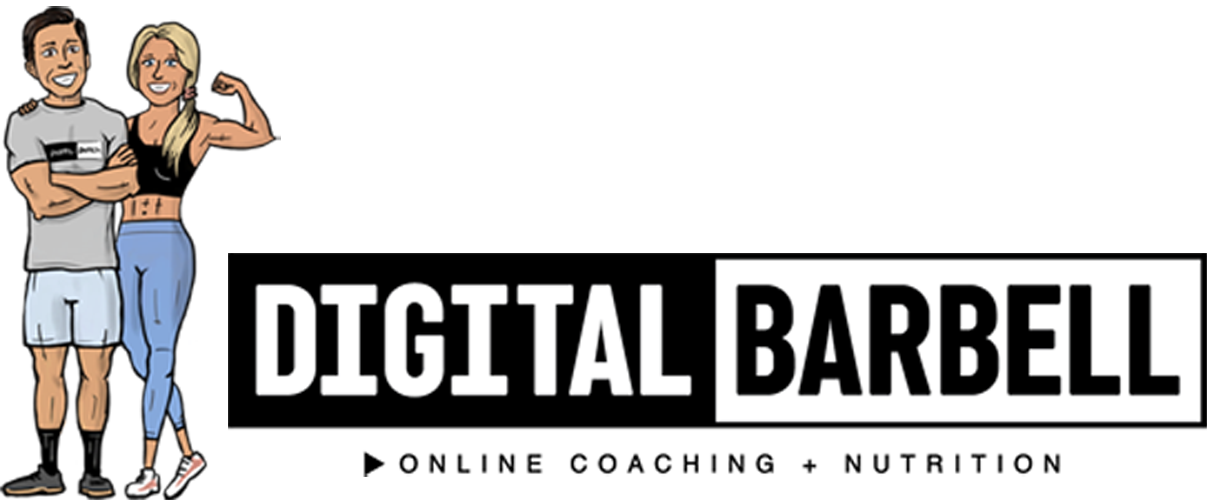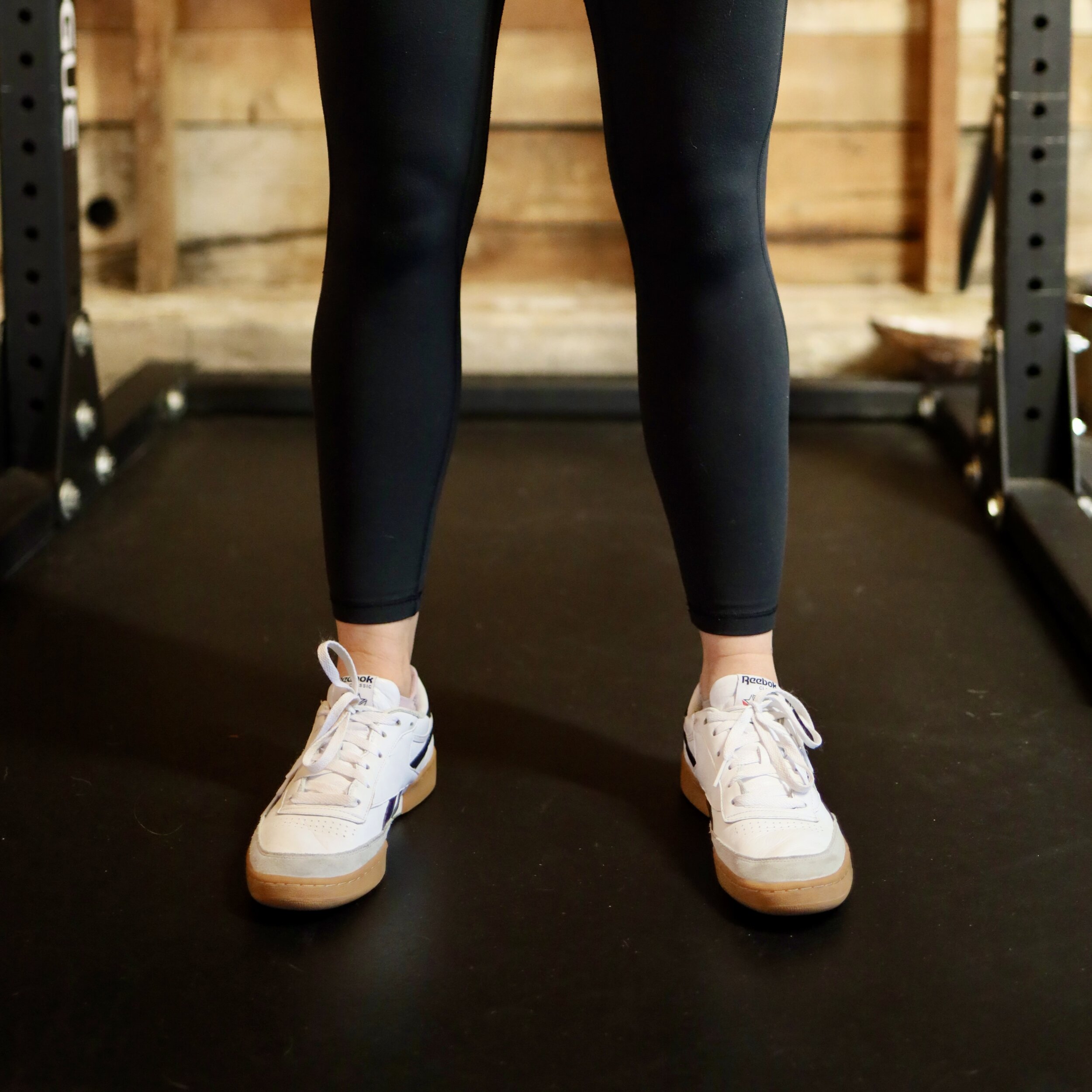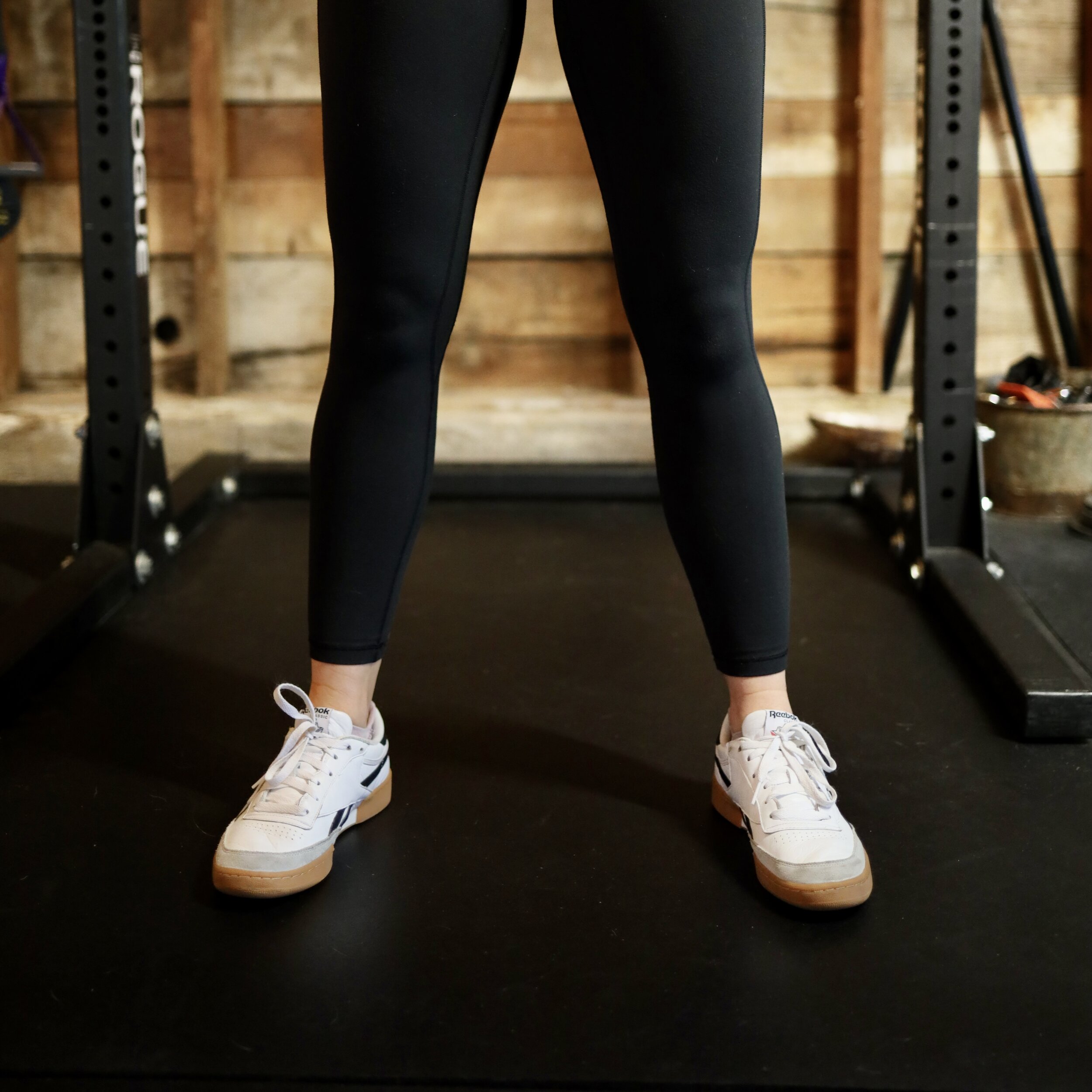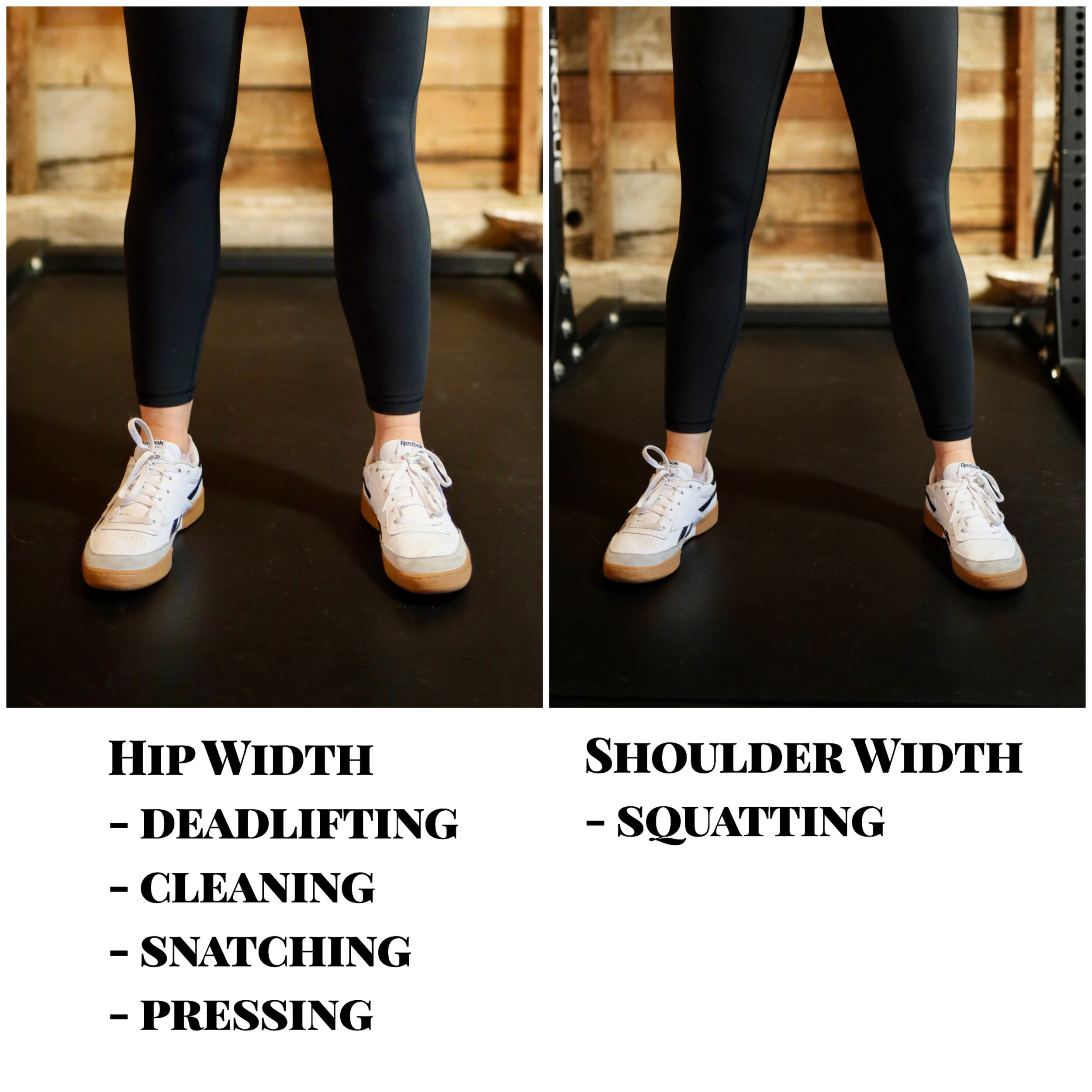Hip Width Stance vs. Shoulder Width Stance & When To Use Them
The way you stand matters.
From how you stand when you engage with others to how you stand when you deadlift a heavy barbell… your stance matters.
As I review someone’s technique, the stance is often the first thing I check. If it’s off, the whole movement will be off.
It’s the foundation of the movement.
Let’s discuss the different stance widths, when to use each, and why it matters so much.
HIP WIDTH
We use a hip-width stance for exercises like the deadlift, the clean, the snatch, and overhead pressing.
Hip Width = heels hip-width apart or directly under the widest part of our hip bones.
This stance allows us to drive power through our “powerful” hips into the ground. Any wider, and we lose power.
Think about what it feels like to deadlift a 300-lb barbell off the ground. It takes a lot of power, generated from the most powerful muscles in our body, pushing against a solid surface like the ground, to move that weight from a dead stop into the air.
Hip width.
Now think about pressing a 150-lb barbell overhead. Strict pressing. It takes a lot of power, pushing through our entire body, against a solid surface like the ground, to press 150-lbs from a dead stop on our shoulders into the air.
Hip width.
Don’t get me started on our most dynamic movements the clean & the snatch (and all versions like the hang, the power, the squat, the dumbbell) and the power we need to generate from… you got it… our hips to power this weight off the ground and into the air to either catch it on our shoulders or overhead.
FINDING YOUR HIP WIDTH STANCE
Here’s how to find your hip-width stance.
Hop a few times in place and your feet will naturally fall into place at your natural hip-width. There is no exact measurement of hip width for everyone, since everyone is created differently. But this hopping technique will do the trick for you.
NOW DON’T FORGET
After you find YOUR hip-width, turn your toes out slightly. This gives you more room for getting the knees out of the way of the barbell, and for pulling the weight from the floor, across the midline of the body.
REMEMBER
We use Hip Width for Deadlifting, Cleaning, Snatching, Pressing.
By the way… We just dropped the only resource you’ll ever need for nailing the perfect, safe deadlift every single time.
We covered everything from the right shoes to wear, to selecting the right weight, and even threw in a sample training program too.
We call it “The Ultimate Deadlift Guide”. - Grab it today before it’s too late by clicking the Yellow Button below.
SHOULDER WIDTH
We use a shoulder width stance when we are squatting.
Shoulder width = heels directly under your shoulders with toes slightly pointed out
This gives you plenty of room for your hips to descend, BUT not so much room that we put pressure on the groin.
This allows us to squat to depth, and stand while engaging the powerful muscles of our posterior chain.
Again, too wide and we put unwanted pressure on the groin and the knees.
TOES POINTED SLIGHTLY OUT WITH KNEES TRACKING IN LINE WITH TOES IS WHAT WE WANT
If you’ve ever been coached by someone on how to squat, you have likely heard them say this in your first session with the squat.
As you squat down, if your toes aren’t pointed slightly out, your knees will track too far forward and not out to each side, which will squeeze your hips and not only make the squat uncomfortable but not give you enough room to descend into the squat.
SETTING YOUR SHOULDER WIDTH STANCE
Since everyone is different, everyone’s shoulder width stance will be different but a good start is to use a mirror and look at your shoulders in relation to your heels, turn those toes out, and squat!
REMEMBER
We use a shoulder-width stance for squatting as well as exercises like kettlebell swings.
As always, reach out with any and all questions you may have!
If you want a coach to guide you, apply for coaching HERE.



